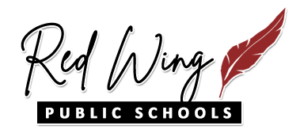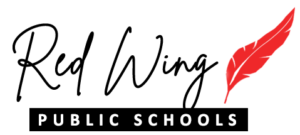Red Wing Public Schools has a variety of intervention and/or supplemental services to help students succeed. We are committed to helping all students reach their full potential.
The Multilingual Learning supports teach social and academic English to maximize students’ classroom experience. Students demonstrate their progress through WIDA Standards Framework – formerly known as World-class Instructional Design and Assessment. Parents/guardians can receive detailed information about supports for academic achievement from their students’ MLL teacher.
Visit the RWPS Multilingual Learner webpage for more information.
Teachers
Bethany Jasin
Red Wing High School
bjjasin@rwps.org
651-385-2182
Kelly Hassemer
Sunnyside and Burnside
kahassemer@rwps.org
651-385-4700
Casey O’Donnell
Twin Bluff
cmodonnell@rwps.org
651-385-4570
Intérprete en Español & Cultural Liaison
Carla Contla
cecontla@rwps.org
651-385-4607
Students who are strong readers by the end of third grade are positioned to be strong learners the rest of their lives..
Minnesota Reading Corps is part of AmeriCorps. Currently, Reading Corps volunteers work with students at Sunnyside Elementary and Burnside ELementary to improve reading proficiency. Students are referred by their teachers.
Reads Corps trains tutors using the science of how children learn. Reading Corps has been recognized by the Library of Congress for best practices in literacy promotion. As an honoree, Reading Corps is just one of four organizations worldwide to be recognized in reading instruction and tutoring.
Math is important in school and beyond. Proficiency is linked to high school graduation, college enrollment, and lifetime earnings.
Minnesota Math Corps is part of AmeriCorps. Currently, Math Corps volunteers work with Burnside and Twin Bluff students who need some extra help with math. The volunteers track student progress and regularly meet to assess data and work toward learning targets.
Students needing extra help in reading may qualify for our Title 1 reading intervention programs, which provides services to students up to three times a week.
Title I is one of the nation’s oldest and largest federal programs supporting elementary and secondary education. More than 90% of the school systems in the United States receive some sort of Title I funding.
Here is Red Wing Public Schools’ Title I Family Engagement Plan.
Through Title I, the federal government disburses money to school districts based on the number of low-income families in each district as determined by census data. However, students do not need to be from a low-income family to benefit from Title I services. Each district uses its Title I money to supplement and improve regular education programs offered to help students meet state standards.
Title I services are not special education services.
Contact
Title 1 coordinator
Megan Damman
mmdamman@rwps.org
651-385-4750
Common Questions
What is the concept behind Title I?
Title I is based on three important ideas:
- All students should have a fair, equal, and significant opportunity to obtain a high-quality education and to reach, at minimum, proficiency on state academic standards and assessments.
2. Local districts, schools, and parents know best what their students need to succeed. The Title I program allows them to decide how to use these funds to implement research-based proven practices to help students who are failing or who are at risk of failing in school.
3. Parents are partners in helping all students achieve. They have the right to be involved in the design and operation of their school’s Title I program, and, at the same time, a responsibility to help their children succeed in school.
Students served by Title I funds include migrant children and youth, children and youth with limited English proficiency, children and youth who are homeless; children and youth who have disabilities; children and youth who are neglected, delinquent or at-risk; children in preschool activities; and any child or youth who is in academic need.
Which schools does Red Wing Public Schools’ Title I program serve?
Title I serves students at Burnside and Sunnyside Elementary Schools. Both have demonstrated that extra assistance is needed in the area of reading and/or mathematics. Title I also serves students who attend qualifying non-public schools.
How does our district receive Title I money?
The federal government provides funding to each state. The Minnesota Department of Education funnels money to local districts with qualifying schools. How much each school receives is determined by the number of low-income students attending that school.
How are individual students selected for services?
Sunnyside and Burnside staff identify the students at their school who need the most educational assistance based on the criteria that school has chosen. Students do NOT have to be from low-income families to receive Title I services.
The Title I instructors set goals for improving the skills of educationally disadvantaged students at their school. Staff then measure student progress to determine the success of the Title I program for each student. Teachers also develops programs for individual students to support/supplement regular classroom instruction.
What does the RWPS Title I program generally offer?
- Special instructional spaces.
- Additional teachers and aides.
- Opportunities for professional development for school staff.
- Extra time for teaching Title I students the skills they need.
- A variety of supplementary teaching methods.
- An individualized program for students.
- Additional teaching materials which supplement a student’s regular instruction.
Alternative Delivery of Specialized Instructional Services or ADSIS assists students who need additional academic or behavioral support to succeed in the general education environment. The goal is to reduce the number of inappropriate referrals to special education by providing proactive instruction early to struggling students.
ADSIS locally focuses on providing literacy support beyond and/or in addition to Title 1.
ADSIS dollars come to Red Wing Public Schools through the Minnesota Department of Education, and the District aligns its ADSIS programming within the continuum of other supports.
Disability Nondiscrimination Statement
The Red Wing School District, ISD, No. 256, shall not discriminate against qualified individuals because of disabilities in employment, or educational services.
ISD 256 shall make reasonable accommodations for the known physical or mental disabilities of an otherwise qualified individual with a disability unless the accommodations would impose undue hardship on the operation of the District’s business.
Students with disabilities are protected from disability discrimination and may be eligible for services under the provisions of Section 504 of the Rehabilitation Act of 1973 even though they do not require or are eligible for individual services as described under federal law known as Individuals with Disabilities Education Act, IDEA.
Contacts
Assistant Special Education Directors
Carrie Hansen
cshansen@rwps.org
651-388-4441
Kayla Awolope
klawolope@rwps.org
651-388-4441
Colvill Family Center
Brittni Kuehl
bakuehl@rwps.org
651-385-8000
Special Education collaboratives
Goodhue County Education District
The Red Wing School District provides special education services in collaboration with the Goodhue County Education District. The other GCED member districts are Cannon Falls, Goodhue, Kenyon-Wanamingo, Lake City, and Zumbrota-Mazeppa.
These coordinated services include the following:
- Setting IV programs for students whose IEP needs exceed those of a self-contained program.
- STEP, a transition program for students after high school
- Staff development and training
Goodhue County Health & Human Services
SPECIAL EDUCATION SERVICES
Section 504
Section 504 is part of the Federal Rehabilitation Act of 1973, which protects the rights of people with disabilities. The act states that no person with a disability can be excluded from or denied benefits of any program provided by public schools. Section 504 is the responsibility of general education and is not a special education program.
Section 504 defines a person as disabled if he or she has (or is perceived to have) a mental or physical impairment, which substantially limits one or more major life activities. This includes caring for one’s self, performing manual tasks, walking, seeing, hearing, speaking, breathing, learning, working, and other activities.
To determine eligibility for services and accommodations, a team of individuals evaluate the student and share the results at a team meeting in which parents and the student are involved. If a student has a disability under Section 504, the school district must develop and implement a plan that details the needed services and/or accommodations. The district’s responsibilities include:
- Provide a free and appropriate public education.
- Provide assurance of nondiscrimination.
- Provide a written plan developed annually.
- Provide grievance procedures to resolve complaints.
- Annually identify and notify all qualified students with disabilities and parents of the district’s Section 504 responsibilities.
- Provide accessible services or facilities.
Special Education online resources
Minnesota Department of Education
U.S. Office of Special Education Programs
SPECIAL EDUCATION DISABILITY CATEGORIES
In response to the federal Individuals with Disabilities Education Act, the state of Minnesota develops eligibility criteria for the 13 categories listed below plus Developmental Disability for Early Childhood Special Education Services (age birth to 5 years).
Before students may be considered for special education services, they must meet the eligibility requirements in one or more of the categories. Teachers and education assistants provide services to students in these categories:
Specific Learning Disabilities (SLD): Students have significantly low achievement in verbal expression, listening, mathematics, reading or writing compared to their intellectual ability.
Speech Impaired (SP): Students experience difficulty understanding speech or verbally expressing themselves.
Emotionally/Behaviorally Disordered (E/BD): Students experience significant behavioral and/or emotional problems that interfere with their own or others ability to learn.
Developmental Cognitive Disability Mild/Moderate Severe (DC-MM, SP): Students have significantly below average intellectual ability and adaptive skills such as self-care, interpersonal relations, academic and vocational skills.
Physically and/or Other Health Impaired (PI)(OHI): Students have health or physical disabilities that significantly interfere with learning.
Deaf and Hard of Hearing (DHH): Students have hearing loss that affects the use or understanding of spoken English.
Vision Impaired (VI): Students are blind or have vision difficulties that significantly interfere with learning. Students receive services such as Braille instruction, educational support, orientation/mobility and vocational training in our district.
Autism Spectrum Disorder (ASD): Students have a developmental disorder that significantly affects interaction with others and communication.
Deaf-Blind (DB): Students have hearing and visual impairments that cause such severe communications, developmental and educational needs that cannot be accommodated through programs for students with only deafness or blindness.
Traumatic Brain Injury (TBI): Students have an acquired injury to the brain that adversely affects educational performance.
Severe and Multiply Impaired (SMI): Students have severe learning and development problems resulting from two or more disability conditions.


